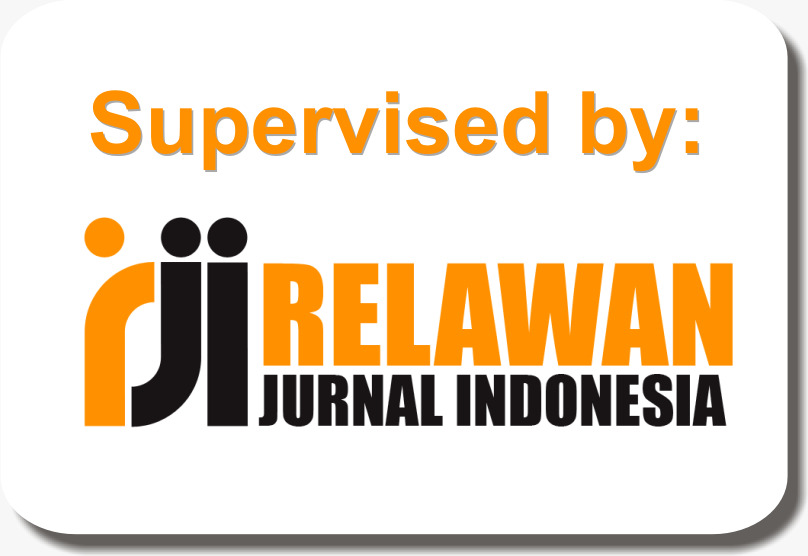THE IMPACT OF THE IMPLEMENTATION OF THE 5E LEARNING CYCLE MODEL ON ARABIC LANGUAGE LEARNING OUTCOMES AT MTS HASYIM ASY’ARI, BATU
Abstract
Keywords
Full Text:
PDFArticle Metrics :
References
L. Darling-Hammond, L. Flook, C. Cook-Harvey, B. Barron, and D. Osher, “Implications for educational practice of the science of learning and development,” Appl Dev Sci, vol. 24, no. 2, pp. 97–140, 2020.
B. M. S. Al-Sobhi and A. S. Preece, “Teaching and learning Arabic in schools: The implications of learners’ and teachers’ beliefs,” Int J Educ Res, vol. 91, pp. 1–10, 2018.
S. Olusegun, “Constructivism learning theory: A paradigm for teaching and learning,” Journal of Research & Method in Education, vol. 5, no. 6, pp. 66–70, 2015.
R. Ellis, Understanding Second Language Acquisition, 2nd ed. Oxford: Oxford University Press, 2019.
M. Ritonga, M. Nababan, and Z. Lubis, “Problematika pengajaran Bahasa Arab di sekolah Islam,” Jurnal Al-Ta’rib, vol. 9, no. 2, pp. 134–150, 2021.
Taufiqurrochman and A. Muslimin, “Studi longitudinal terhadap pembelajaran Bahasa Arab di sekolah menengah,” Jurnal Pendidikan Islam, vol. 6, no. 1, pp. 89–102, 2021.
M. Syarifuddin, M. Habibi, and S. Alwi, “Faktor-faktor kesulitan belajar Bahasa Arab,” Jurnal Tarbiyatuna, vol. 11, no. 1, pp. 1–15, 2020.
M. Yildiz, “From teacher-centered to student-centered learning: A shift in foreign language education,” Educational Research and Reviews, vol. 15, no. 5, pp. 266–275, 2020.
J. Hattie and G. Donoghue, “Learning strategies: A synthesis and conceptual model,” NPJ Sci Learn, vol. 3, no. 1, pp. 1–13, 2018.
A. Wahab, “Korelasi metode pengajaran dengan hasil belajar Bahasa Arab siswa,” Jurnal Ilmu Pendidikan Islam, vol. 4, no. 2, pp. 102–115, 2021.
M. Ibrahim and S. Nuraeni, “Evaluasi pembelajaran Bahasa Arab di sekolah menengah,” Jurnal Pendidikan Bahasa dan Sastra Arab, vol. 8, no. 1, pp. 55–70, 2022.
R. Rivai, R. M. Azis, and Z. Zainuddin, “Strategi pembelajaran Bahasa Arab di era digital,” Arabiyat: Jurnal Pendidikan Bahasa Arab dan Kebahasaaraban, vol. 8, no. 1, pp. 45–62, 2021.
A. Schleicher, Education and Skills for 2030: OECD Future of Education and Skills 2030 Project. OECD Publishing, 2020.
L. B. Duran and E. Duran, “The 5E instructional model: A learning cycle approach for inquiry-based science teaching,” The Science Education Review, vol. 3, no. 2, pp. 49–58, 2004.
S. Ucar and K. C. Trundle, “Enhancing conceptual change through the 5E learning cycle model: A meta-analysis,” Int J Sci Math Educ, vol. 19, no. 4, pp. 755–775, 2021.
R. Romli, S. Abdullah, and A. Kurniawan, “Meta-analisis pengaruh model pembelajaran learning cycle 5E terhadap hasil belajar,” Jurnal Pendidikan, vol. 19, no. 2, pp. 180–191, 2018.
R. Zulfikar, R. Ramadhani, and M. Siregar, “Penerapan model 5E dalam pembelajaran bahasa Inggris,” Jurnal Ilmu Pendidikan Baha-sa, vol. 11, no. 1, pp. 11–22, 2022.
B. Santoso and H. Purwanto, “Penerapan model learning cycle 5E untuk meningkatkan penguasaan kosakata Bahasa Arab,” Jurnal Pendidikan Bahasa Arab, vol. 3, no. 1, pp. 55–65, 2019.
N. Wulandari and S. N. Azizah, “Pengaruh model pembelajaran Learning Cycle 5E terhadap motivasi belajar,” Jurnal Inovasi Pendidi-kan, vol. 7, no. 1, pp. 34–43, 2021.
D. Psillos and P. Kariotoglou, “Constructivist perspectives and the 5E model in science education,” in International Handbook of Science Education, Springer, 2019, pp. 289–308.
J. W. Creswell and J. D. Creswell, Research Design: Qualitative, Quantitative, and Mixed Methods Approaches, 5th ed. Thousand Oaks, CA: Sage, 2018.
J. R. Fraenkel, N. E. Wallen, and H. H. Hyun, How to Design and Evaluate Research in Education, 10th ed. New York: McGraw-Hill Education, 2019.
I. Etikan, S. A. Musa, and R. S. Alkassim, “Comparison of convenience sampling and purposive sampling,” American Journal of Theoretical and Applied Statistics, vol. 5, no. 1, pp. 1–4, 2016.
N. M. Razali and Y. B. Wah, “Power comparisons of Shapiro-Wilk, Kolmogorov-Smirnov, Lilliefors and Anderson-Darling tests,” Journal of Statistical Modeling and Analytics, vol. 2, no. 1, pp. 21–33, 2011.
R. W. Bybee et al., The BSCS 5E Instructional Model: Origins and Effectiveness. Colorado Springs, CO: BSCS, 2006.
T. C. Liu, H. Peng, W. H. Wu, and M. S. Lin, “The effects of mobile natural-science learning based on the 5E learning cycle: A case study,” Educational Technology & Society, vol. 12, no. 4, pp. 344–358, 2009.
A. O. Qarareh, “The effect of using the learning cycle method in teaching science on the educational achievement of the sixth graders,” International Journal of Educational Sciences, vol. 4, no. 2, pp. 123–132, 2012.
A. Tuna and A. Kaçar, “The effect of the 5E learning cycle model on 6th grade students’ understanding of planetary motion,” Euro-pean Journal of Science and Mathematics Education, vol. 1, no. 2, pp. 67–83, 2013.
M. Qorizada and Z. Amirian, “Applying the 5E learning cycle to teaching EFL writing,” Journal of Language Teaching and Research, vol. 8, no. 3, pp. 606–612, 2017.
M. A. Al-Khuli, Learning Arabic: A Step-by-Step Approach. Riyadh: Darussalam, 2010.



